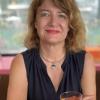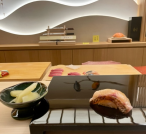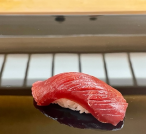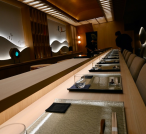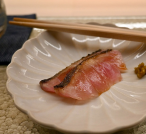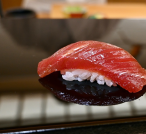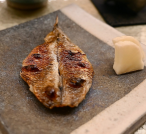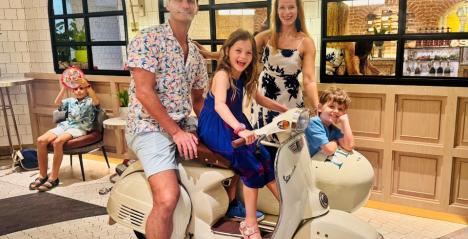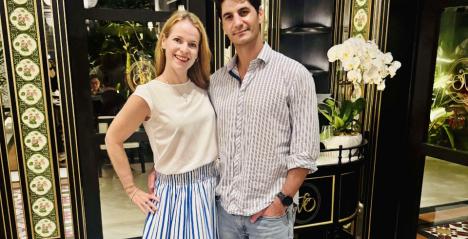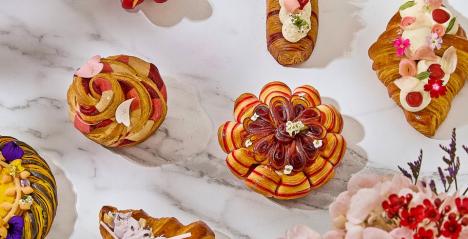Driven by a long standing principle to honour the integrity of produce, technicality and taste, be part of a transcendence experience in Sushi Kawasemi.
From the intricate ambience and years of honed traditional craftsmanship in Edomae sushi to the careful curation of seasonal ingredients for the menu, everything is purposefully thought out and handcrafted with precision right down to the finest details.
The Potential of Quality Ingredients

The cornerstone of their omakase is the team’s highly selective procurement of the best seafood. On a daily basis, the Chef is in contact with auction bidders from all over Japan to source the freshest seasonal ingredients, which are then imported to the restaurant 4 times a week. To introduce a human touch with extra sensitivities to the palate, their menu only features exceptional creations handmade from scratch, bringing to light the pivotal role of each and every component within a dish.
Rooted in Traditional Craftsmanship
Boasting over a decade of experience, the itamae (Head Chef), is committed to Sushi Kawasemi’s philosophy of honouring the traditional methods of edomae sushi. This is reflected in their use of the age-old technique, Shinkei-jime. This ‘nerve-cutting’ method for fish preparation involves severing the fish’s spinal cord by inserting a steel wire into the neural canal to quickly and humanely kill it. As there is no suffering during the process, this prevents the release of stress hormones that can affect the texture and taste. As such, they are able to present the freshest and highest quality fish possible to their guests.

While the fish may be the star of the omakase, the supporting ingredients are what further elevates the whole experience. Their rice, the foundation of sushi itself, makes use of a special grade of koshihikari from, which is widely considered to be the best type of rice in Japan. The use of Fuji water for the cooking process further enhances the taste profile. Even their tamago is made completely in-house with just fish, egg, yamatoimo and sugar (without flour) and then grilled at 80-85 degrees over a slow fire for a light char, all these involving a minimum of 1 hour of preparation.
The Craft of Custom Fish Ageing
Their mastery in fish preparation further shines through the practice of custom fish ageing, which can only be executed with finesse. Based on the fish varieties, the Chef will either employ jukusei (wet ageing) or ichiyaboshi (dry ageing), both of which encompass a delicate process that requires patience and attention to the smallest details.
Even within each ageing approach, the procedures differ depending on the type of fish. Wet ageing involves marinating the fish in salt, soy sauce or kelp and they are subsequently placed in the fridge after excess sauces are removed. This demands the Chef to be back in the kitchen every single day without fail to check on the condition of the meat as any surplus water content or desiccation will ultimately ruin the flesh. As a result of the wet ageing, enzymes and fibres in the fish are broken down, moisture is removed and the fats are better retained, allowing for increased tenderness.

Dry ageing, on the other hand, has to take place in a controlled kitchen environment at a specific cool temperature, to mimic the way that the Japanese would slice, salt and leave their fish to dry outside their homes. Depending on its type, the fish’s quality will be optimised and ready to serve between day 5 to day 14 of the process.
Even the slightest change in one of the steps will have a significant impact on the taste of the fish being presented to customers. The Chefs, therefore, carry a heavy responsibility to oversee every minute part of both approaches as part of their dedication to quality.
Acclaimed Sakes With a Rich History

Sake enthusiasts can look forward to having Juyondai there, where their bottles are considered one of the most affordable around. With limited stocks available both domestically and overseas, Juyondai is one of the most sought after brands in the market due to its acclaimed reputation in the world of Sakes.
Besides these exquisite selections, their in-house sommeliers also work hand-in-hand with sommeliers in Japan to curate the Sake list on a monthly basis to bring to guests drinks that are best enjoyed with the season’s ingredients. Not just that, their curation especially explores lesser-known craft Sakes that are not commonly available in Singapore, in appreciation of the artisans behind smaller, hidden-gem breweries and their craftsmanship.
a. 120 Telok Ayer St, Singapore 068589
You May Also Like


